Why Is My Cactus Leaning? 8 Possible Reasons
-
Pete Ortiz
- Last updated:
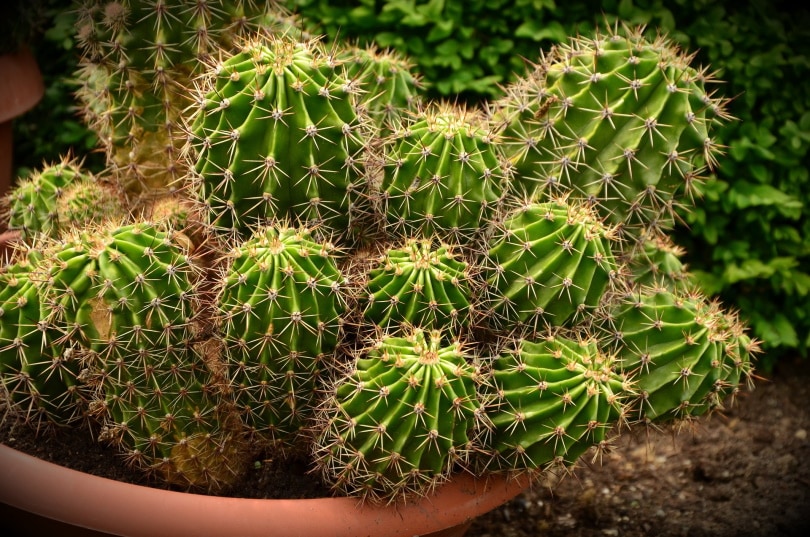
A cactus plant is a perfect addition to your home because of its size, shape, and flowers. You can perch it on your windows or style it on a shelf in a decorative way to enhance interest in your space. It’s slow growing but self-sustaining because it stores water in its leaves, stems, and roots.
Healthy cacti should grow at a ninety-degree angle to the soil. This shows that the plants are getting the proper nutrients and growing in a suitable environment. However, your cactus may look healthy but leaning away from sunlight.
Identifying the cause of the cactus leaning is essential to take the appropriate action to sort the problem. This article looks at some reasons why your cactus is leaning and how to fix the problem where. We will also highlight the ideal conditions to grow your cactus. Keep reading for a deeper insight.
The 8 Reasons Your Cactus Is Leaning & Remedies
A cactus plant requires an airy, light, and warm place. It’s a hardy plant able to survive harsh conditions and stress. It can do well in direct sunlight. However, falling and leaning are clear signs that your cactus has a problem. Several factors can cause your plant to lean as seen below:
1. Root Rot Disease
Root rot is usually a result of bacterial and fungal infections caused by overwatering of the plant. If the problem is not handled fast, the plant eventually dies. If the leaning is due to root rot, the infected part may look slimy, mushy, and dark-colored beginning from the bottom.
The best solution, in this case, is to uproot the cactus, treat the infected part with recommended fungicide and replant in new soil.
2. Pest Infestation
Pest infestation may also cause your cactus to lean. Pests that infest cactus plants include ants, mealybugs, and others that suck the sap from the leaves and stems. The plant becomes weak, deformed, and eventually leans over. These pests also feed on the plant, making them susceptible to fungal infections.
If you spot pests near the plant pot or container, you should kill them immediately. You can use insecticidal soap to kill the bugs and their eggs. Another option is to rinse the cactus in a concentrated liquid dish soap solution with water. This method works effectively if the pests haven’t caused severe damage to your cactus plant.
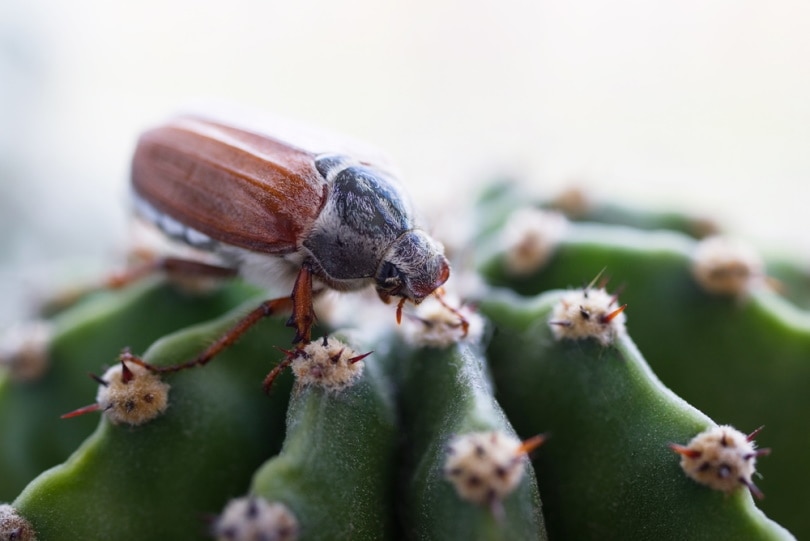
3. Insufficient Sunlight
Cactus plants thrive well in bright sunlight and heat. They adapt well to high light intensity and heat. The indoor types may not be strong enough to withstand such high heat intensity. However, they still require the right amount of sunlight to grow strong and upright. Lack of enough sunlight can make the cactus plant lean.
The best solution is to provide your plant with six to twelve hours of sufficient sunlight. Replicate the natural environment in which cacti thrive in the wild. If the leaning cactus is in a dark place, move it to a room with sufficient light.
Another option is to move the potted plants outdoors on your terrace or patio to allow them to get enough light. Once upright, get them back indoors but in an area with sufficient light.
4. Freezing Temperatures
A cactus can also lean due to stress as a result of extreme cold weather conditions. The first indication of cactus leaning because of freezing is blackened parts. The blackening worsens if the plant continues to be exposed to freezing temperatures.
When the temperatures start to rise, your cactus plant may start growing upright. The best solution to this issue is to put the potted plant in radiated heat if you plant outdoors. You can also cover the cactus with a cotton sheet to keep it warm.

5. Pot Size
A cactus plant should be grown in a pot that is not too big such that the roots struggle to reach water and nutrients. A big pot prevents your cactus from getting enough water, making it lean. On the other hand, the pot should not be too small so that the roots lack ample space to grow.
You need a standard pot that allows your cactus to grow up to one to two inches at the bottom. As the cactus grows, repot it every two to three years.
You should also plant in a pot that allows the cactus to grow from both sides. Such a pot allows your cactus to grow and benefit from nutrients and water in the soil. With enough nutrients and water, your cactus will grow upright and strong.
6. Underwatering and Overwatering
One indication of an underwatered cactus is a weak stem that makes it lean and changes color to purple.
You should water your cactus twice or thrice a month during summer, parts of spring and fall, and once during winter. Though you should reduce the watering in winter, you should not completely stop since cactus transpires even during cold conditions.
Overwatering your cactus may also make it lean and suffer from root rot because of soil wetness. The first indications of an overwatered stem include leaves turning bright green and a soft stem. This can also occur if you grow the cactus in slow-draining soil or a container with no holes for drainage.
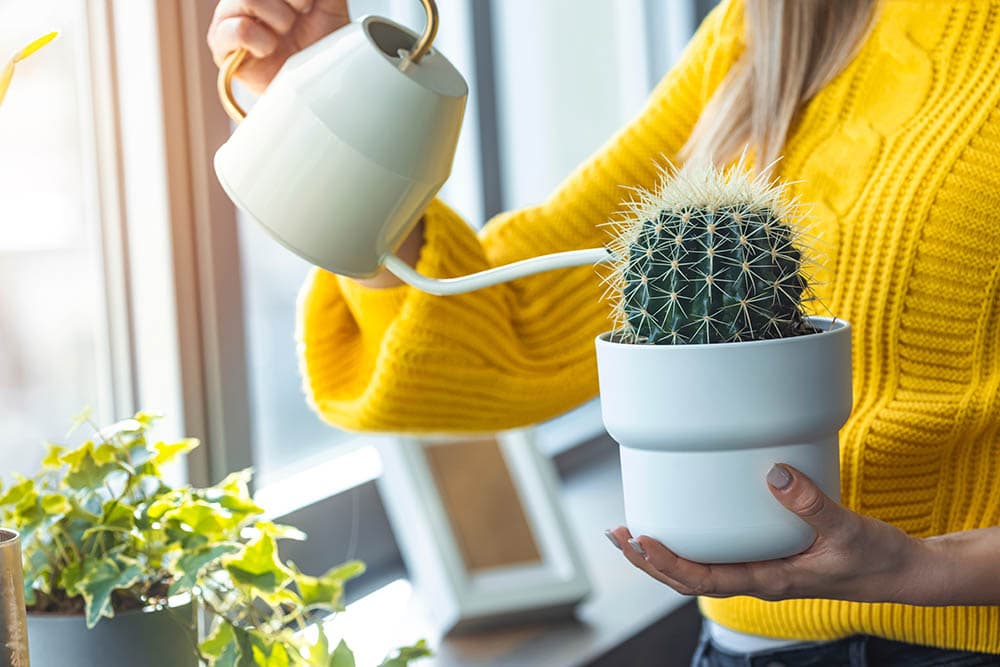
7. Planting Issues
Your cactus may also lean if you plant it in the wrong way. If you find it leaning towards the grounds, you may have planted it loosely in the ground. To prevent this problem, make sure you plant your cactus firmly in the soil. You can also add a layer of gravel and small rocks on the surface to be more stable.
8. Heavy Weight
If your cactus plant is large, it might lean due to its heavy weight. This happens because as the plant grows taller, it becomes heavy at the top, making it hard for the bottom to support the weight. Your cactus plant may also develop many offsets at the top, making it lean when the pups get heavier.
To solve this issue, you can use stakes to support the weight of the plant. You can also apply stakes on the mother plant to give support as the pups get heavier. Another solution is to separate the crowded offsets from the mother plant and propagate them. This allows the mother plant to breathe and grow upright.
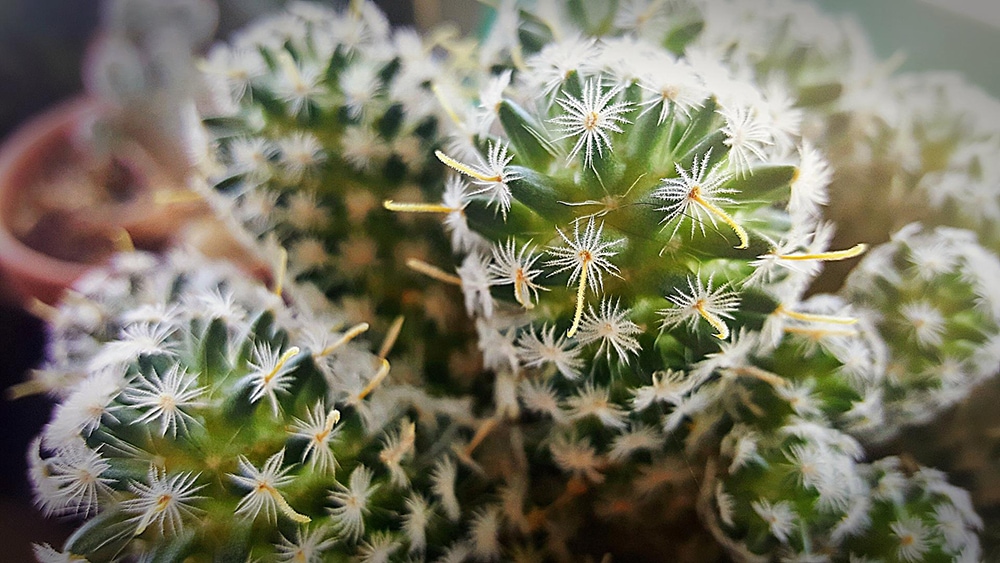
What Are the Right Conditions to Grow a Healthy Cactus?
There are various types of cactus plants you can have in your home, either as indoor houseplants or in your landscape. If you grow indoors, place them near a west or south-facing window. You can move them outdoors during summer when the night temperatures are below 65 degrees Fahrenheit.
Place the plants in a protected area and allow them to get adapted to the outdoor conditions. Then, you can move them into the house in an area with more sunlight.
Like any other plant in your home, you need to take the necessary care for your cacti for them to thrive. Here are some care and maintenance tips.
1. Provide Enough Light
It’s good to allow your cacti to get soaked up in the sun, but not too much of it. Cacti do well in direct sunlight, so you need to place them in the sunniest and warmest parts of your home. Get them outside when nighttime temperatures are over 50 degrees Fahrenheit.
The plants will thrive and grow more quickly outdoors than when in an indoor environment. You can take them inside when the summer ends and temperatures drop below 50 degrees Fahrenheit. While you need to expose them to sunlight, be mindful since too much of it can get them sunburned.
Excess sunlight makes them turn brown or yellow. If you see these signs, move them away from the sun to cool down.
2. Watering
Water the plants, but don’t overdo it and give breaks between the watering. Cactus plants can do without much water since they store water in their stems. Check your soil after two to three weeks. If you find two to three inches of dry soil, you need to water the plant. However, note that overwatering can cause root rot.
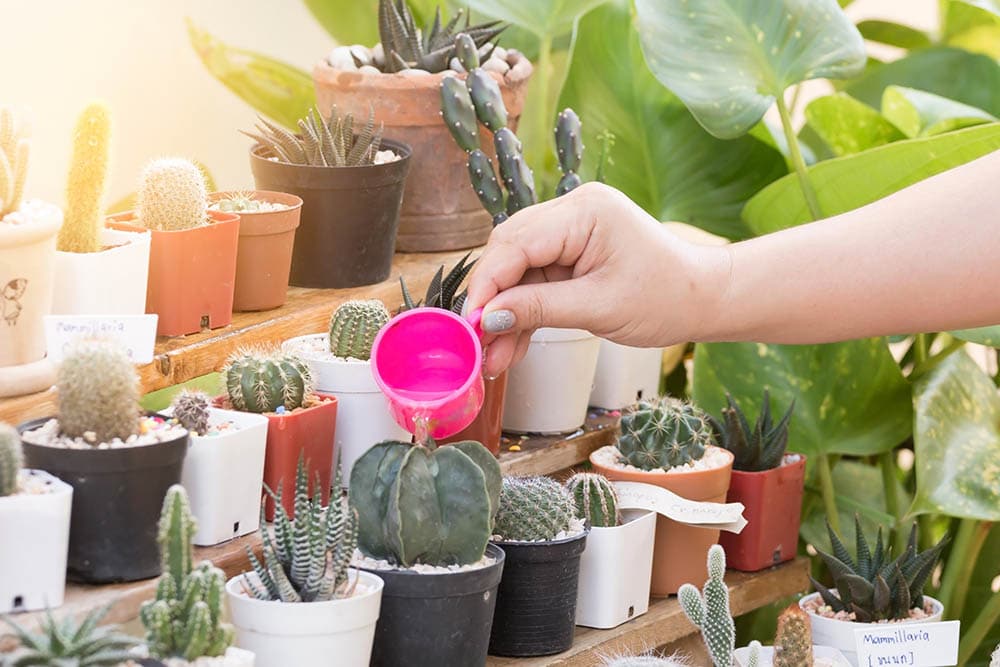
3. Use the Right Fertilizer and Soil
Use the right soils and food specifically tailored for the cactus plant. The plants do well in many soil types including rocks and sand. Also, make sure you use fertilizers made for cactus plants but avoid overfeeding or underfeeding them.
Conclusion
A cactus is a great plant to have in your home. It brings a natural feel to your space and makes it look elegant. Though it’s a hardy plant, it’s also prone to various problems. One of the problems is leaning caused by pest infestations, overwatering or underwatering, heavy weight, freezing temperatures, lack of enough sunlight, root rot diseases, and planting issues.
You should understand the cause of the leaning to fix it appropriately. Ensure your plants are watered correctly, receive enough sunlight and warmth. Additionally, plant them in the right-sized container so that it grows healthy and strong.
Featured Image Credit: congerdesign, Pixabay
Contents


